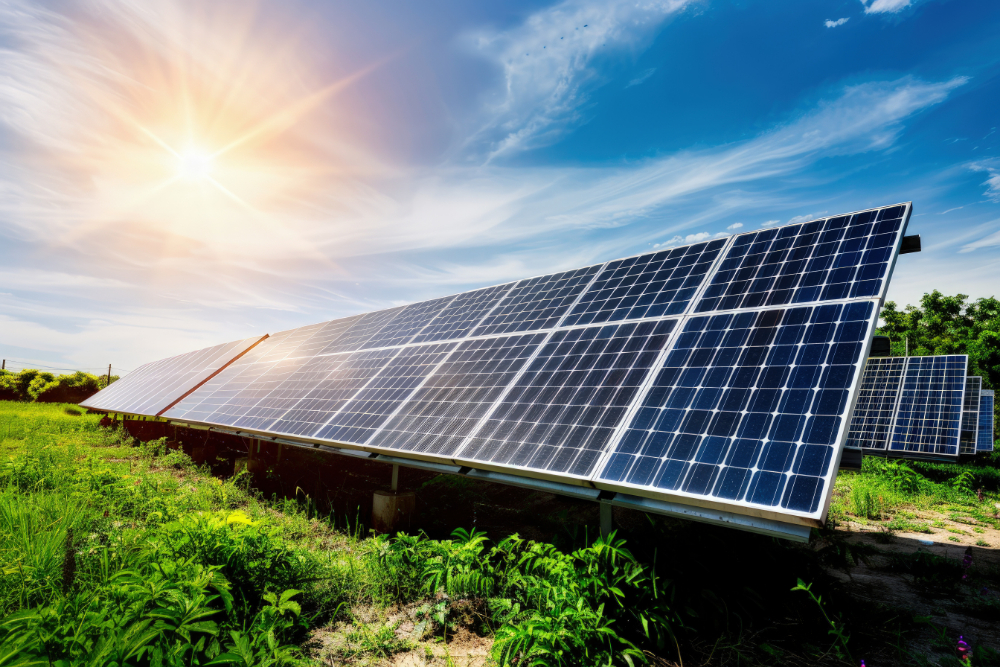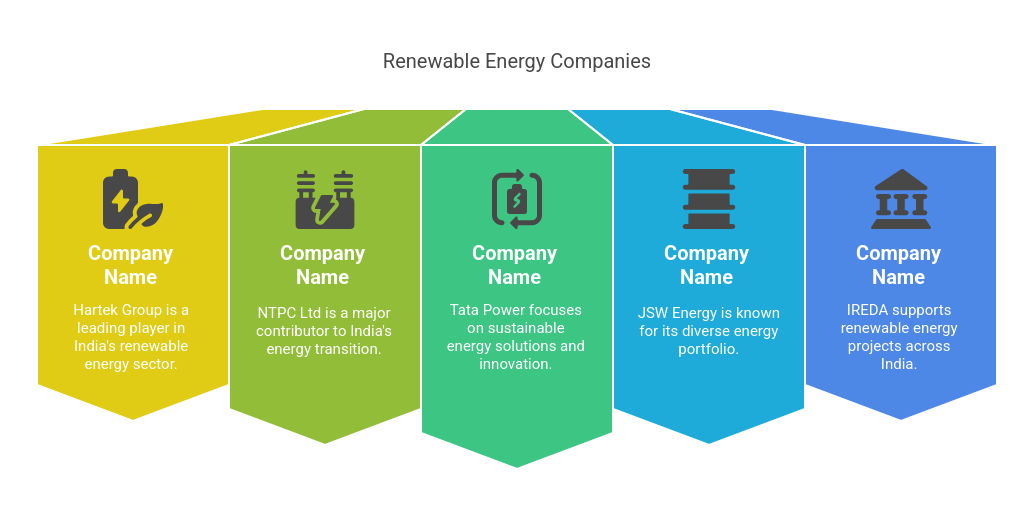India has set targets for renewable energy adoption, aiming to reach 500 GW of capacity by 2030. This historic transition to renewable energy is critical to the country’s long-term growth and commitment to addressing climate change. However, the intermittent nature of renewable energy sources such as solar and wind power creates considerable issues. One solution to overcome these challenges and increase India’s renewable energy growth is to use improved meteorological data.
In this blog, we’ll look at how enhanced weather forecasting and data analytics might help India’s renewable energy sector flourish, with a specific emphasis on the contributions of industry giants like Hartek Group in renewables expansion.
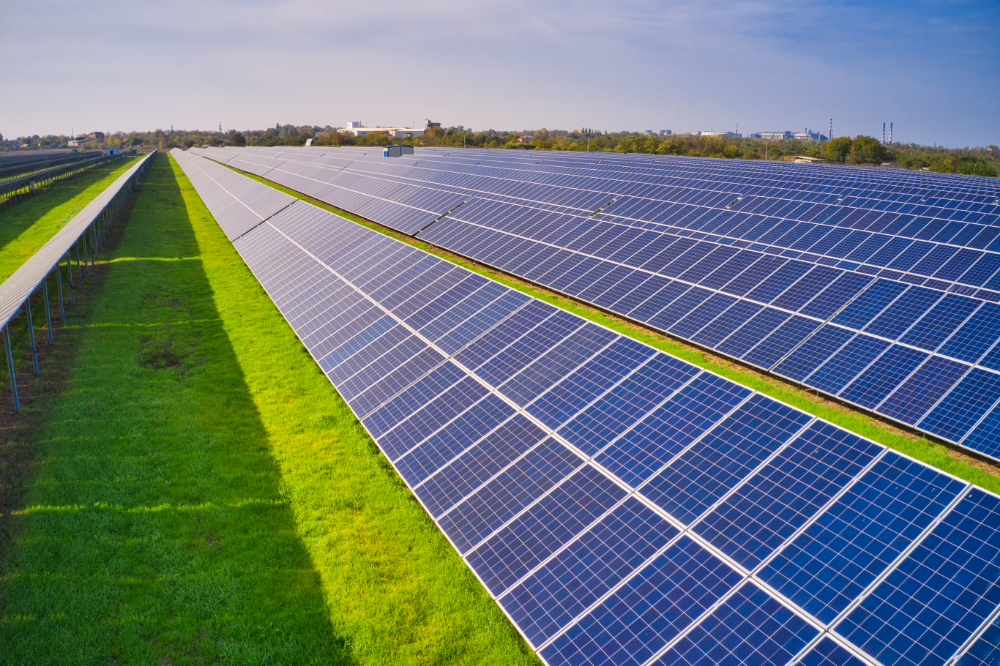
Relation Between Indian Weather and Renewables Expansion
Renewable energy sources, especially solar and wind, are inherently volatile. Cloud cover may significantly diminish solar energy production, but wind turbines need steady wind speeds to produce power. This intermittency presents a considerable challenge to grid operators, who need to balance supply and demand in order to maintain a reliable energy network.
India has four different seasons:
- Summer (March-May) is the warmest season, with temperatures increasing throughout the nation. The summer monsoon, also known as the pre-monsoon, delivers sporadic showers and thunderstorms.
- Monsoon (June-September): The monsoon season is distinguished by significant rainfall, particularly in northern and central India. This is the most important season for agriculture because it gives critical moisture to crops.
- The post-monsoon season (October-November) sees a decrease in rainfall, with occasional showers and thunderstorms. Temperatures begin to cool.
- Winter (December-February) is quite chilly, with temperatures decreasing dramatically in northern India. Some areas get snowfall, particularly in the Himalayan Alps.
The monsoon season is very significant for India’s renewable energy industry.
Hydropower: Heavy rainfall throughout the monsoon season fills reservoirs, assuring a consistent supply of water for hydroelectric facilities.
Solar Power: While the monsoon season reduces solar irradiation, it also brings lower temperatures, which may boost solar panel efficiency.
Wind Power: The monsoon winds may be used to generate wind power, offering an additional source of renewable energy throughout this season.
The International Energy Agency (IEA) predicts that the percentage of variable renewable energy (VRE) in India’s power mix will increase from 8% in 2019 to 31% by 2030. This rise emphasises the critical need for improved forecasting and management technologies to incorporate intermittent sources efficiently into the grid.
Challenges of using meteorological data for renewable energy in India
Data voids
Accurate forecasting is hampered by insufficient high-resolution meteorological data, especially in rural places.
Outdated modelling
It’s possible that current weather models aren’t sophisticated enough to account for regional variations in weather patterns.
Data accessibility
It might be difficult to provide renewable energy operators with timely access to trustworthy meteorological data for accessing clean energy potential.
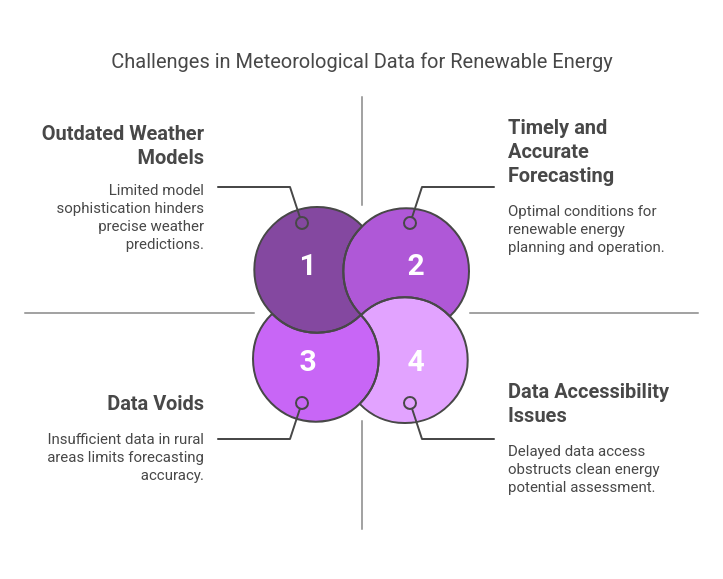
Use of Accurate weather data
Accurate weather data is critical for maximizing renewable energy output and integration. Here’s how improved weather data might help India’s renewable energy expansion:
Improved Resource Assessment
Developers may use detailed meteorological data to locate the best places for solar and wind installations. Companies may make better judgements about where to locate new renewable energy installations by analysing long-term weather trends, wind speeds, solar irradiance, and other pertinent elements.
Enhanced Short-Term Forecasting
Short-term weather predictions enable grid managers to predict swings in renewable energy output. This foreknowledge allows them to alter the output of traditional power plants or activate energy storage solutions to keep the grid stable.
Optimised Grid Management
Accurate weather forecasts allow grid managers to integrate variable renewable energy sources effectively. This enhanced management decreases the requirement for expensive backup power and minimises the waste of renewable energy during times of excess capacity.
Increased Investor Confidence
Reliable weather data and production projections may assist in mitigating the perceived risks associated with renewable energy installations. This enhanced certainty may attract further investment in the industry, resulting in further development.
Advanced Maintenance Scheduling
Weather data may help with maintenance plans for renewable energy installations. Scheduling maintenance during times of low wind or solar activity may reduce output losses.
Harnessing Big Data and AI
When integrated with big data analytics and artificial intelligence, weather data becomes even more powerful. These systems can handle massive volumes of historical and real-time meteorological data, resulting in very accurate predictions and insights.
For example – machine learning algorithms may analyse trends in meteorological data as well as energy production data to estimate renewable energy generation with increasing accuracy over time. This predictive capacity allows grid operators to make proactive choices instead of reactive ones, resulting in more efficient and clean energy potential.
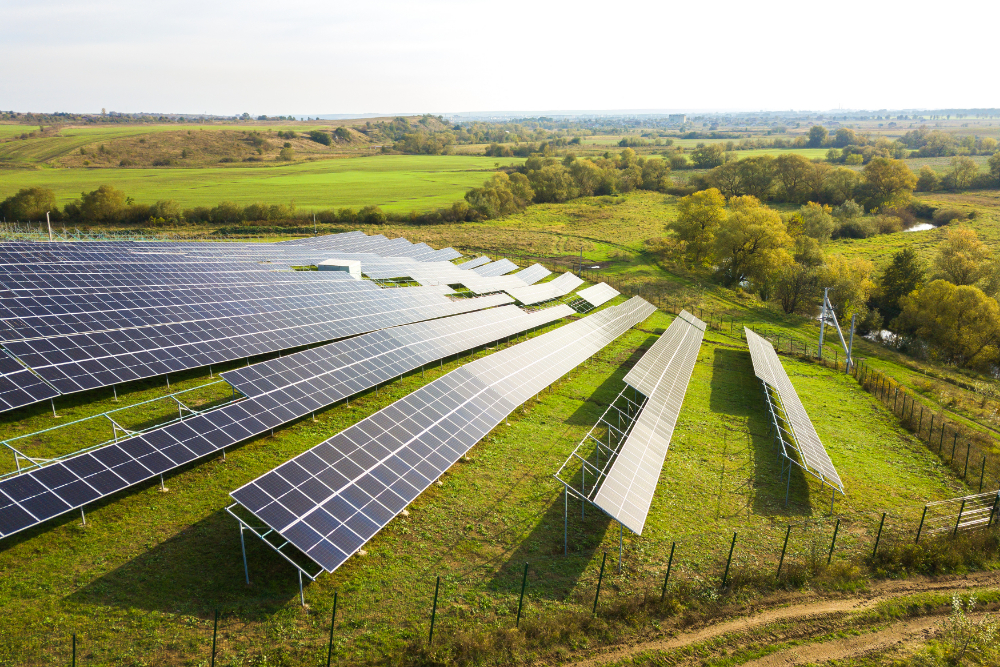
Need for Improved Weather Data in India’s Renewables Expansion
Moving forward, continuous investments in weather monitoring infrastructure, data analytics skills, and smart grid technologies will be critical. Policymakers, business leaders, and technology providers must collaborate to build a strong ecosystem that facilitates the collection and use of high-quality meteorological data.
Improved weather data will be a critical facilitator as India works to reach its renewable energy objectives and move to a low-carbon economy. It will promote more effective resource allocation, enhance grid management, increase investor confidence, and, eventually, speed up the country’s renewable energy boom. With the appropriate tools and methods in place, India can better use its rich renewable resources, paving the path for a cleaner, more sustainable energy future.
The Hartek Group’s Contribution
Hartek Group, a pioneer in India’s renewable energy market, shows how businesses may use sophisticated meteorological data to support renewable energy growth. Its considerable expertise in solar EPC (Engineering, Procurement, and Construction) services has put it at the forefront of incorporating cutting-edge weather forecasting systems into its projects.
We have installed cutting-edge weather monitoring systems throughout our solar arrays. These devices give real-time information on sun irradiance, temperature, humidity, and other important characteristics.
Our smart grid systems use meteorological data to optimise power distribution and storage, assuring the most efficient use of renewable energy resources.
We analyze the long-term weather data to optimise solar plant design and layout, maximising energy generation and project profits.
Through these activities, Hartek Group has not only enhanced the performance of its projects but has also provided significant insights and best practices to the larger renewable energy India industry.
Conclusion
As India moves closer to a renewable energy-powered future, the value of accurate, timely, and complete meteorological data cannot be understated. By using sophisticated weather forecasting, big data analytics, and AI, the nation can overcome the obstacles presented by renewable energy’s intermittent nature.
Companies like Hartek Group are setting the standard for how these technologies can be properly incorporated into renewable energy projects. Our creative ideas not only increase the performance and dependability of individual installations but also help maintain the overall stability and efficiency of India’s power system.
FAQ’s:-
1. Why is weather data important for India’s renewable energy sector?
Weather data helps predict solar and wind energy output, enabling better grid management and reducing power fluctuations.
2. How does improved weather forecasting benefit renewable energy projects?
It enhances energy production accuracy, optimizes grid stability, and reduces backup power needs during weather changes.
3. What role does Hartek Group play in renewable energy expansion?
Hartek Group uses advanced weather monitoring systems and smart grid technology to optimize renewable energy efficiency.
4. How can big data and AI improve renewable energy forecasting?
AI analyzes large weather datasets to provide precise energy output predictions, enhancing power distribution efficiency.
5. What are the challenges in using weather data for renewable energy in India?
Data voids, outdated models, and limited accessibility hinder accurate forecasting, affecting energy production consistency.

